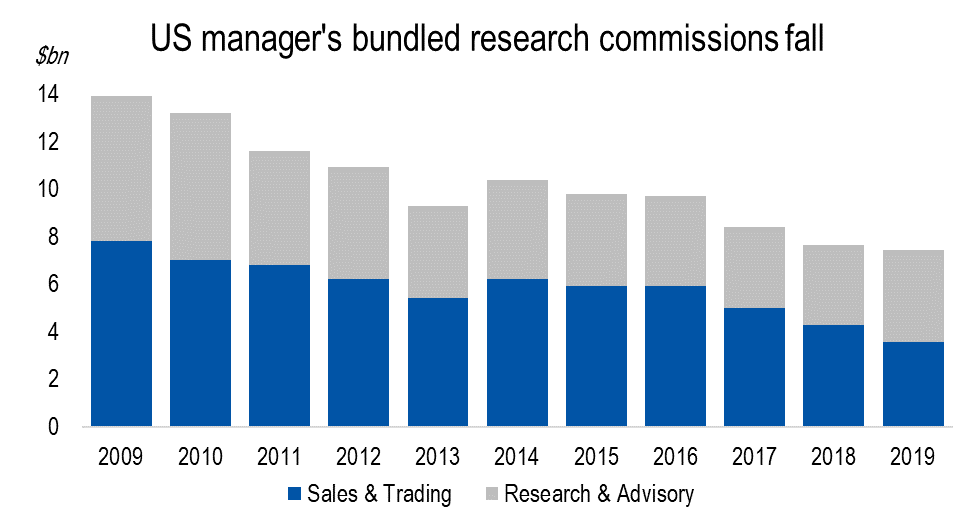Mifid II – Less than 2 Years Later
In early 2018 following the implementation of MIFID II, we discussed The Continuing Impact of Regulations on the Broker Model. Less than two years later, the direct impact of the regulation is clear as is the idea that issuers need to devote greater efforts to identify and directly interact with an audience of the “right" investors.
The sell-side is undergoing a structural decline
Economic realities have been driving behavioral changes on both the buy-side and the sell-side for years, but this trend has been accelerating over the past three years. In that time period, U.S. fund managers have reduced their brokerage commission budgets by a stunning 40%, according to the Financial Times. The FT cites the pressure that the global investment banking business is under, highlighting that revenues were down by a further 11% in the first half of 2019, hitting a 13-year low. As the commission pool shrinks, banks shrink headcount in equities, further reducing the quantity and quality of services provided to corporate issuers.
According to Greenwich Associates, bundled equity commissions in the US are down by ~ 50% in the last 10 years. Commission dollars allocated to research and advisory are down by ~55% in the same time period. This trend has been catalyzed by MiFID II.

Source: © Financial Times 2019 / Greenwich Associates 2019 US Equity Investors Study
Public companies are starting to feel the impact
According to a recent study by IR Magazine, 50% of IR professionals rate their overall impression of the impact of Mifid II as being negative.
Of this group that have a negative impression, about half have already seen a decrease in the number of investor meetings and have changed their approach to corporate access.

Some of the key takeaways from the survey include the following percentage of IROs reporting:
Decrease in
Investor Meetings
Decrease in
Analyst Quality
Decrease in
Analyst Quantity
Not surprisingly, 0% of IR professionals have seen a decrease in their general workload:

Meanwhile, 22% decreased their use of brokers for roadshows, and 32% have reported decreases in the number of investors they are meeting:


Perhaps as a result, 53% of IROs have increased their efforts to directly target investors:

Notably, only three out of 10 IROs views their direct targeting of investors as having been successful.
As MiFID II continues to sink in, we have found that institutional investors are increasingly receptive to the direct outreach we make on behalf of our clients. Most importantly, our clients are seeing the right audience of investors and coming away from each meeting with the impression that their time has been well spent.
While we perform extensive investor targeting and have built a proprietary targeting system, our ability to execute a successful investor targeting and outreach program is based on our relationships with high quality institutional investors and our collective decades of experience working on behalf of issuers on bulge bracket institutional equity sales desks. Working outside of the traditional Wall Street ecosystem that is facing structural decline, we are able to add value to our clients without conflict and continue to add resources to help solve a real corporate need.